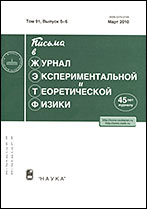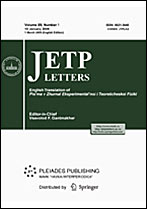|
This article is cited in 3 scientific papers (total in 3 papers)
ASTROPHYSICS AND COSMOLOGY
Emergent physics on Mach's principle and the rotating vacuum
G. Jannesa, G. E. Volovikbc
a Modelling & Numerical Simulation Group, Universidad Carlos III de Madrid, 28911 Leganés, Spain
b Landau Institute for Theoretical Physics of the RAS, 119334 Moscow, Russia
c Low Temperature Laboratory, Aalto University, P.O. Box 15100, FI-00076 Aalto, Finland
Abstract:
Mach's principle applied to rotation can be correct if one takes into account the rotation of the quantum vacuum together with the Universe. Whether one can detect the rotation of the vacuum or not depends on its properties. If the vacuum is fully relativistic at all scales, Mach's principle should work and one cannot distinguish the rotation: in the rotating Universe+vacuum, the co-rotating bucket will have a flat surface (not concave). However, if there are “quantum gravity” effects which violate Lorentz invariance at high energy, then the rotation will become observable. This is demonstrated by analogy in condensed-matter systems, which consist of two subsystems: superfluid background (analog of vacuum) and “relativistic” excitations (analog of matter). For the low-energy (long-wavelength) observer the rotation of the vacuum is not observable. In the rotating frame, the “relativistic” quasiparticles feel the background as a Minkowski vacuum, i.e. they do not feel the rotation. Mach's idea of the relativity of rotational motion does indeed work for them. But rotation becomes observable by high-energy observers, who can see the quantum gravity effects.
Received: 05.06.2015
Citation:
G. Jannes, G. E. Volovik, “Emergent physics on Mach's principle and the rotating vacuum”, Pis'ma v Zh. Èksper. Teoret. Fiz., 102:2 (2015), 82–88; JETP Letters, 102:2 (2015), 73–79
Linking options:
https://www.mathnet.ru/eng/jetpl4680 https://www.mathnet.ru/eng/jetpl/v102/i2/p82
|


| Statistics & downloads: |
| Abstract page: | 222 | | Full-text PDF : | 44 | | References: | 58 | | First page: | 10 |
|





 Contact us:
Contact us: Terms of Use
Terms of Use
 Registration to the website
Registration to the website Logotypes
Logotypes








 Citation in format
Citation in format 
